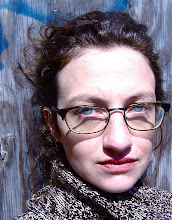The Artist and the Flasher
Louise Bourgeois:
In conversation with Nigel Finch, July 21, 1993.
The flasher is somebody who deals with things that are not supposed to be said, heard or, or seen. Right. Right. The flasher continually deals with, with the unsaid, unnoticed. And I, I like the flasher, because I live in that in that world where I like to call a cat a cat, a spade a spade, whatever. And that is where, that is where we find the necessary impulses and desires that are, that we need.[…] No, the flasher is the person that we have to take care of. Otherwise, it would be dangerous. But, in that word of regulation, the flasher has began a friend.Interviewer:
Why is the girl inside the flasher?Louise Bourgeois:
That is why the girl has taken refuge in the flasher's coat because she knows that nothing can go wrong. The limits are established and nothing can go wrong. The game is not rigged and that is why the girl takes refuge in that coat. Now, that is difficult to understand. In fact, it is not difficult to understand at all, if you are sympathetic. And has been able in the process of growing up, to feel compassion for the big fool, that is the flasher. The flasher is a man who has not grown up, the flasher is himself, is a retarded creature, that's why they find themselves. That's why they like each other. They are poor devils together. The big coat is a metaphor for the unconscious. She takes refuge the same way that artists take refuge in the unconscious. I feel at ease with my unconscious. I trust it.”
In conversation with Nigel Finch, July 21, 1993.



6 Comments:
WTF! She's her own voyeur, it seems. Maybe she'll eat herself out on the next interview.
Much of her art is to do with making sense of her father's affairs, innit?
That seems to have been a formative experience, yes. Her father was sleeping with the governess, or perhaps he installed her in the house as his mistress/governess; anyway, her mother put up with living with her husband's conquests in the same house, which must have created strange tensions.
What she's talking about here, with the coats and the unconscious, reminds me of the language Benjamin uses to talk about the flaneur's boredom:
Boredom is a warm gray fabric lined on the inside with the most lustrous and colorful of silks. In this fabric we wrap ourselves when we dream. We are at home then in the arabesques of its lining. But the sleeper looks bored and gray within his sheath. And when he later wakes and wants to tell of what he dreamed, he communicates by and large only this boredom. For who would be able at one stroke to turn the lining of time to the outside? Yet to narrate dreams signifies nothing else (Arcades, Belknap ed., 106).
The flasheur, it seems.
If I had the text with me, I'd look into re-writing Baudelaire's "Loss of a Halo" to be about the loss of a coat. XYZ, indeed.
Post a Comment
<< Home